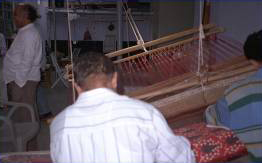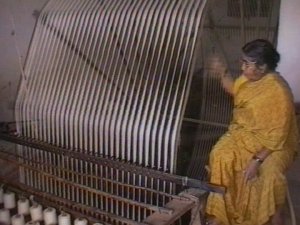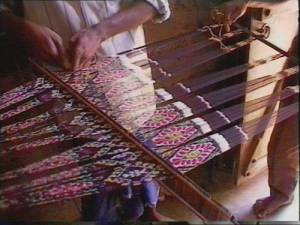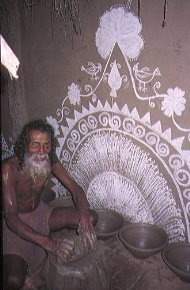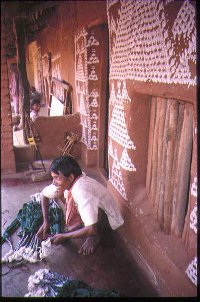IKAT
- is
a type of weaving where the warp, weft or both are tie-dyed before
weaving to create designs on the finished fabric. Great care must
be taken in tying resist areas with water repellent material such
as bicycle inner tubes cut into strips. The precision of the wrapping
determines the clarity of the design. After wrapping, the warp threads
are dyed. When finished and unwrapped, the areas under the ties have
stayed the original colour. Numerous colours can be added after additional
wrappings. Designs generally are worked out on graph paper. Great
care must be taken in putting the warp on the loom, keeping all the
threads in position is necessary for the design to work. The natural
movement during weaving gives ikat designs a feathered edge which
characterize this technique .
|
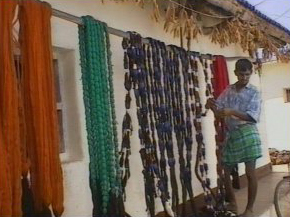 |
